We caught up with the brilliant and insightful Tina Fuller Somers a few weeks ago and have shared our conversation below.
Tina, thanks for joining us, excited to have you contributing your stories and insights. Can you share an important lesson you learned in a prior job that’s helped you in your career afterwards?
After getting an undergraduate degree in Painting and a master’s degree in science illustration, I worked for a few years for a textbook publishing company before realizing that sitting isolated behind a double computer screen fulfilling checklists of graphics was not how I was looking to spend my life.
I made a pivot and began working as a visual merchandiser for Patagonia– which provided me the opportunity to still use my creative background, but also to interact with a community I enjoyed. I continued doing freelance art and design projects on the side, but with the stability of a steady income and insurance coverage. Over time, I ended up taking on lots of different roles within the company, from coordinating environmental grants and special events to working as assistant manager. I cannot overstate how many important lessons I learned in my 9 years with this company. The commitment to environmentalism and community in conjunction with high quality product is an ethos I carry into my own small business today. I prioritize being as eco-conscious as possible, donating and giving back to those in my community, and I never cut corners on the quality of anything I make and distribute. On a smaller scale, the people skills I picked up have been invaluable– from how to manage employees to how to interact with the general public. I worked in very high traffic stores– I’d have all kinds of interactions with hundreds of people daily! Connecting to strangers and helping to find their needs, solve their problems, or share their stories, was fulfilling in a way that I aim to carry through to my art career. I love working with clients to collaborate on a piece of art that fills a need, or to connect with customers at an art fair over a funny greeting card I’ve made… I learned that I’m not the kind of artist that wants to make art in a vacuum of solitude. I want to make art to connect and to contribute to my community.
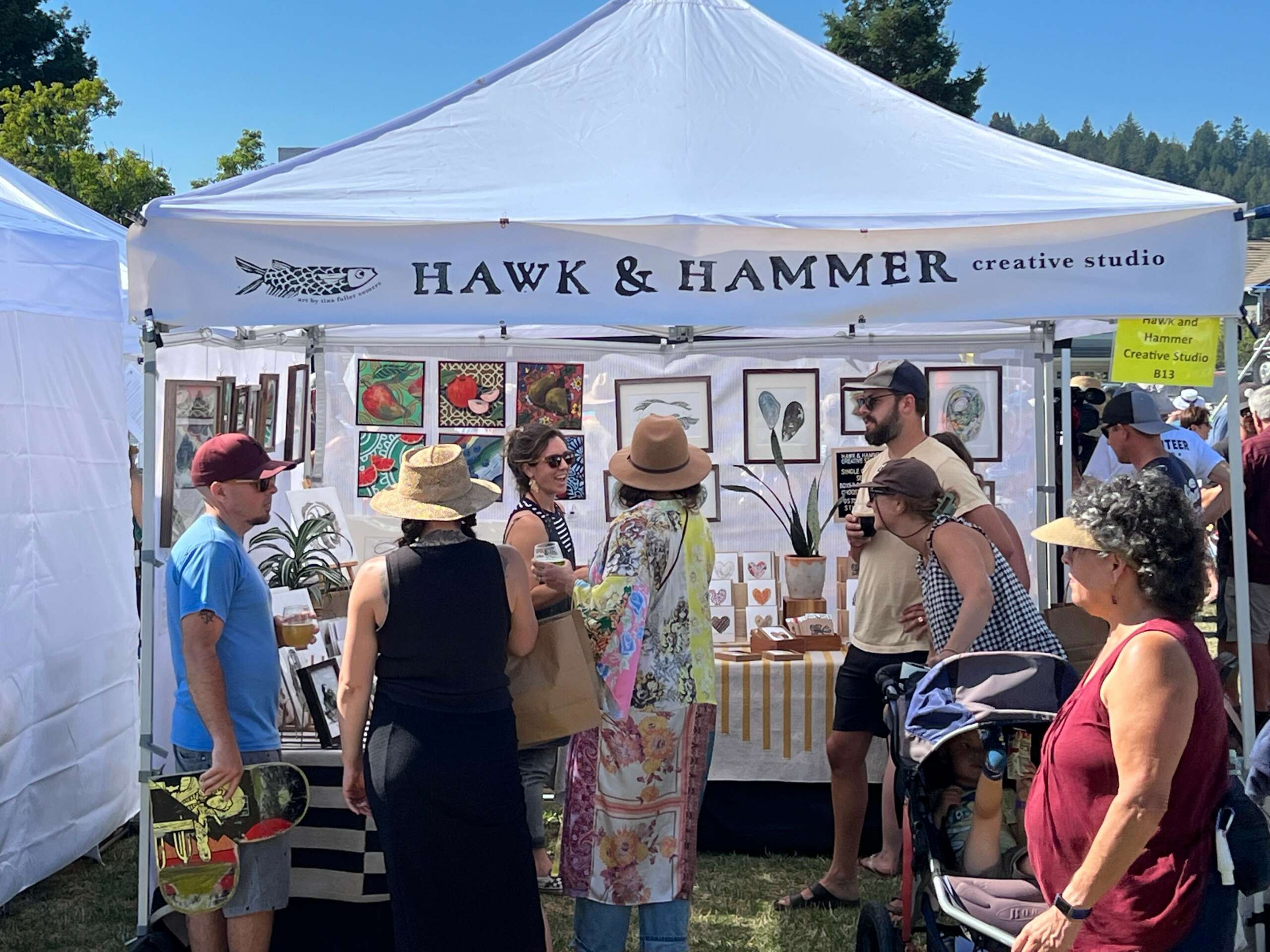
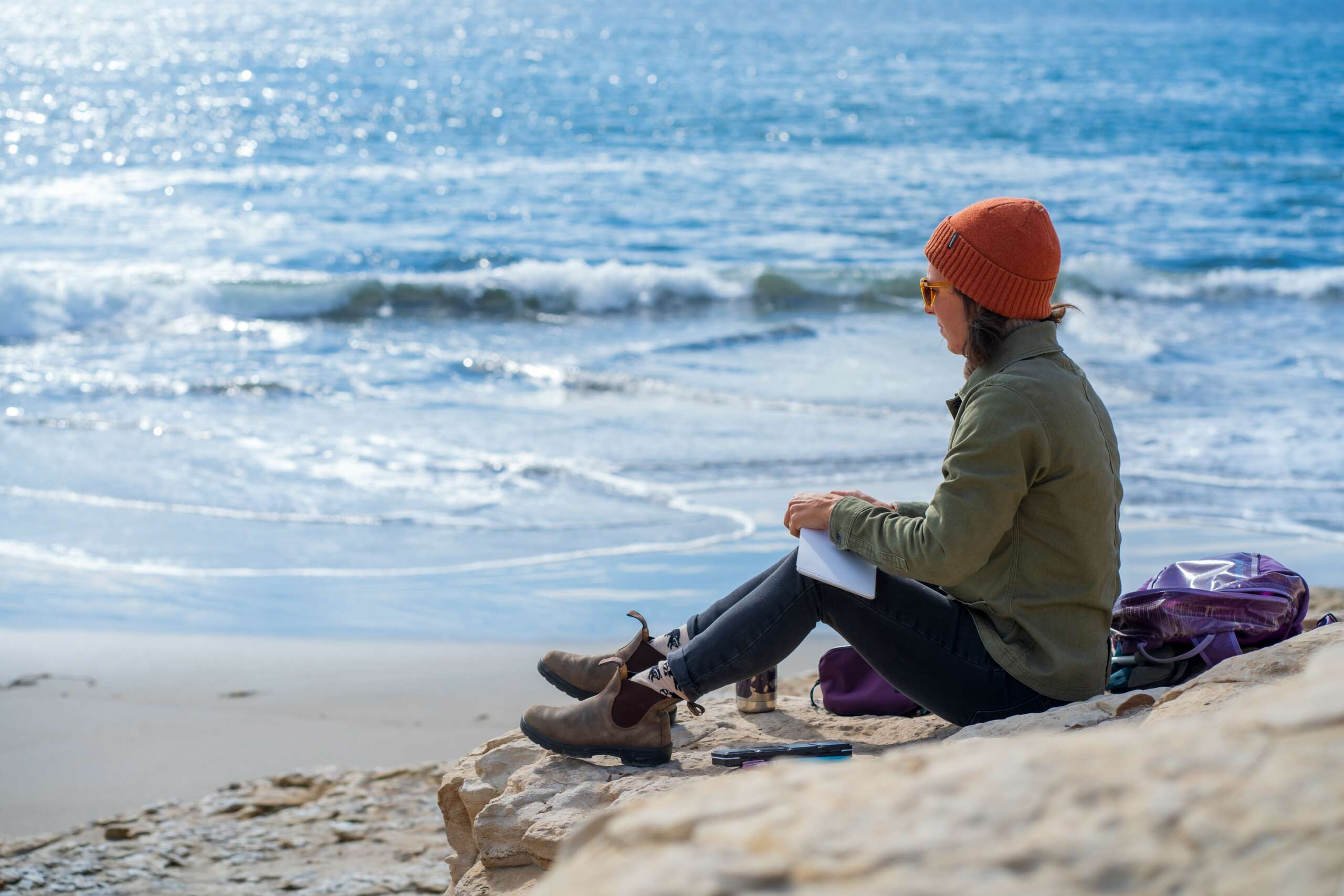
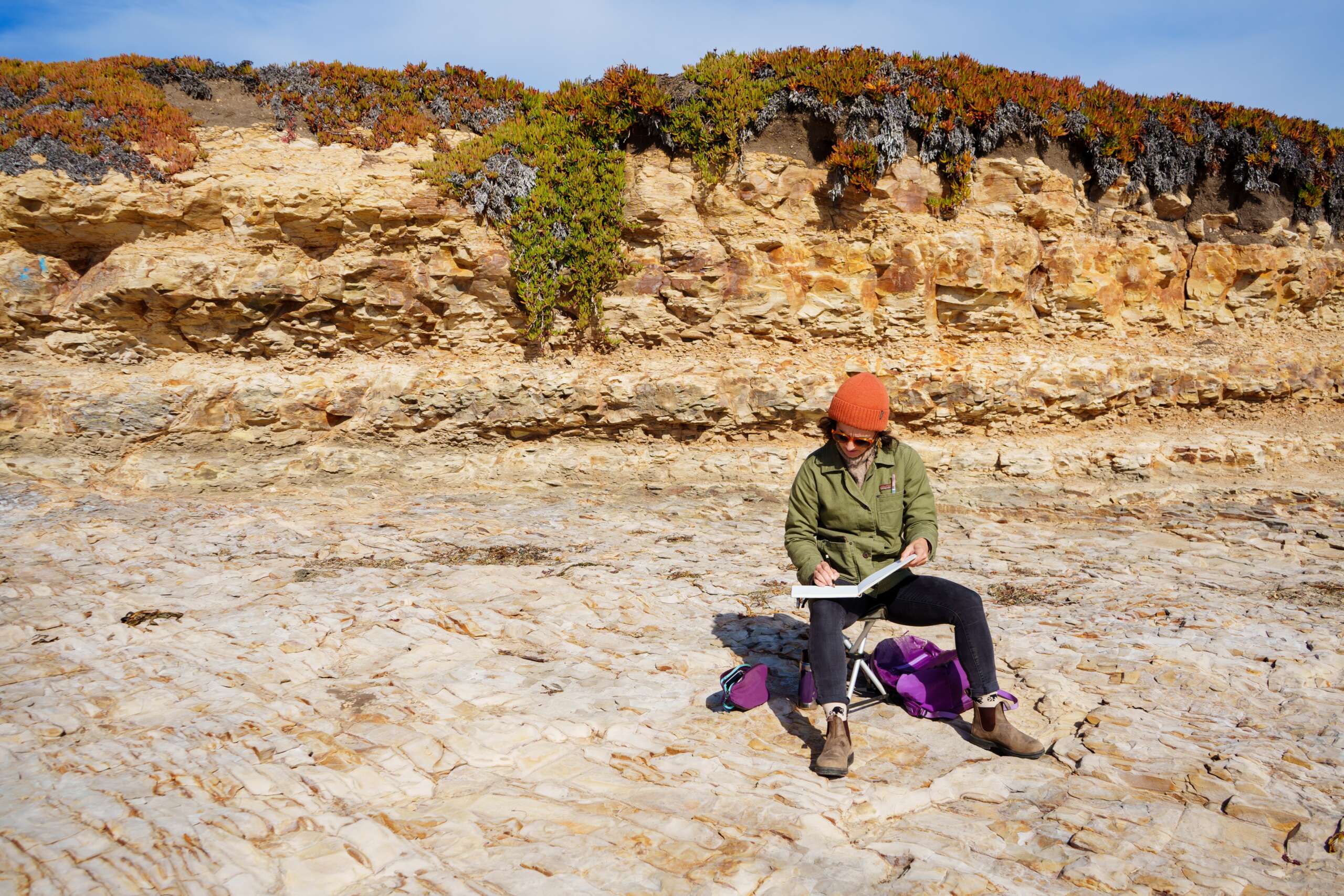
Great, appreciate you sharing that with us. Before we ask you to share more of your insights, can you take a moment to introduce yourself and how you got to where you are today to our readers.
I always loved to draw, but value science just as highly. Becoming a science illustrator was the perfect way for me to blend my interests. I studied painting and art history as an undergraduate at the College of Creative Studies at UC Santa Barbara. While there, I was able to take courses not only in art but botany as well, with a goal to pursue a graduate degree at UC Santa Cruz’s Science Illustration Masters Certification– a highly competitive, world-class program. I was so thrilled to be one of the 15 students they took on in 2007, and that program was one of the most intense, challenging, yet incredibly fulfilling things I’ve ever done. I completed my certification by interning at the Lyon Arboretum at the University of Manoa, Hawaii. I worked as a freelance illustrator/designer on the side, throughout my time as a graphic artist for a textbook publishing company as well as during my 9 years working for Patagonia. I had always loved doing client work and making my own art and illustrations, but trying to doing both freelance work *and* holding down a demanding management job at Patagonia, AND having had two young children at this point– I came to the realization there just wasn’t enough time or energy in a given day to do all the things I wanted to. I had to prioritize– and after careful consideration, I realized I had enough courage (and a bit of stability and savings) to set out as my own independent art business.
Hawk & Hammer Creative Studio, my business (named after my childhood dogs), provides a broad array of art celebrating nature, from scientific illustrations, whimsical animal/marine-themed linoleum prints, to thoughtful watercolor scenes, and bright acrylic paintings. The scale of my projects range from large murals to mini sketches. I also produce a popular annual calendar with images from my sketchbook each year, as well as a line of cheeky, science/marine-related pun greeting cards.
I’m proud of providing images/drawings/paintings that connect and bring clarity, understanding, and joy. Scientific concepts are often difficult to access in any given public arena, and I love providing images that help to interpret ideas to a broad range of people. Interpretive panels and murals are examples of projects that reach the community in a visually interesting way and I love being a part of that.
In the same way, making my own art and having people connect with the imagery (a mother/baby otter scene, or a detailed carving of a locally caught fish) is just as joyful– even if it is just a little notecard with a silly sketch of seagulls, making a complete stranger laugh — and then buying it to make her friends laugh — is such a fun way of passing smiles along and creating positive connections.
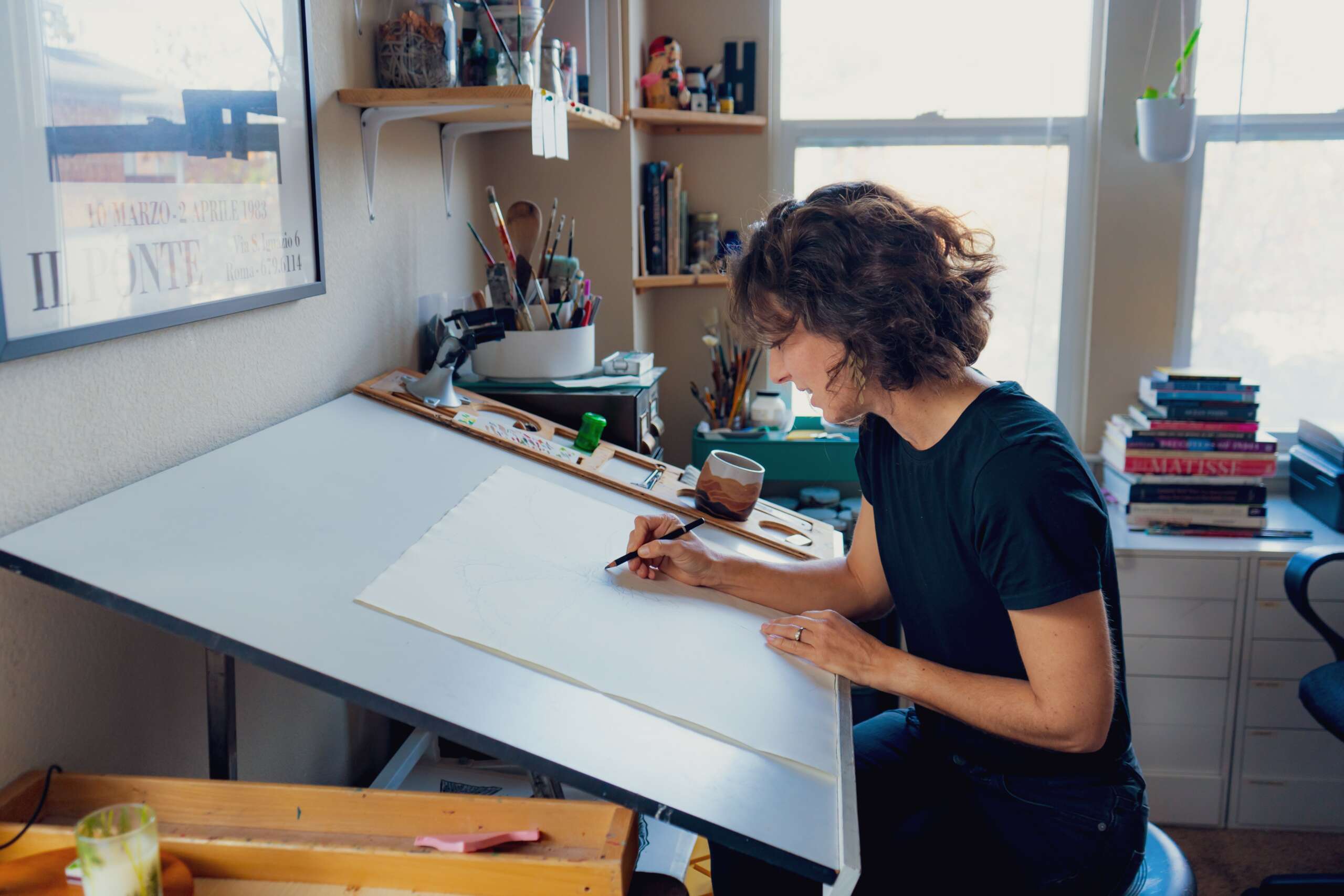

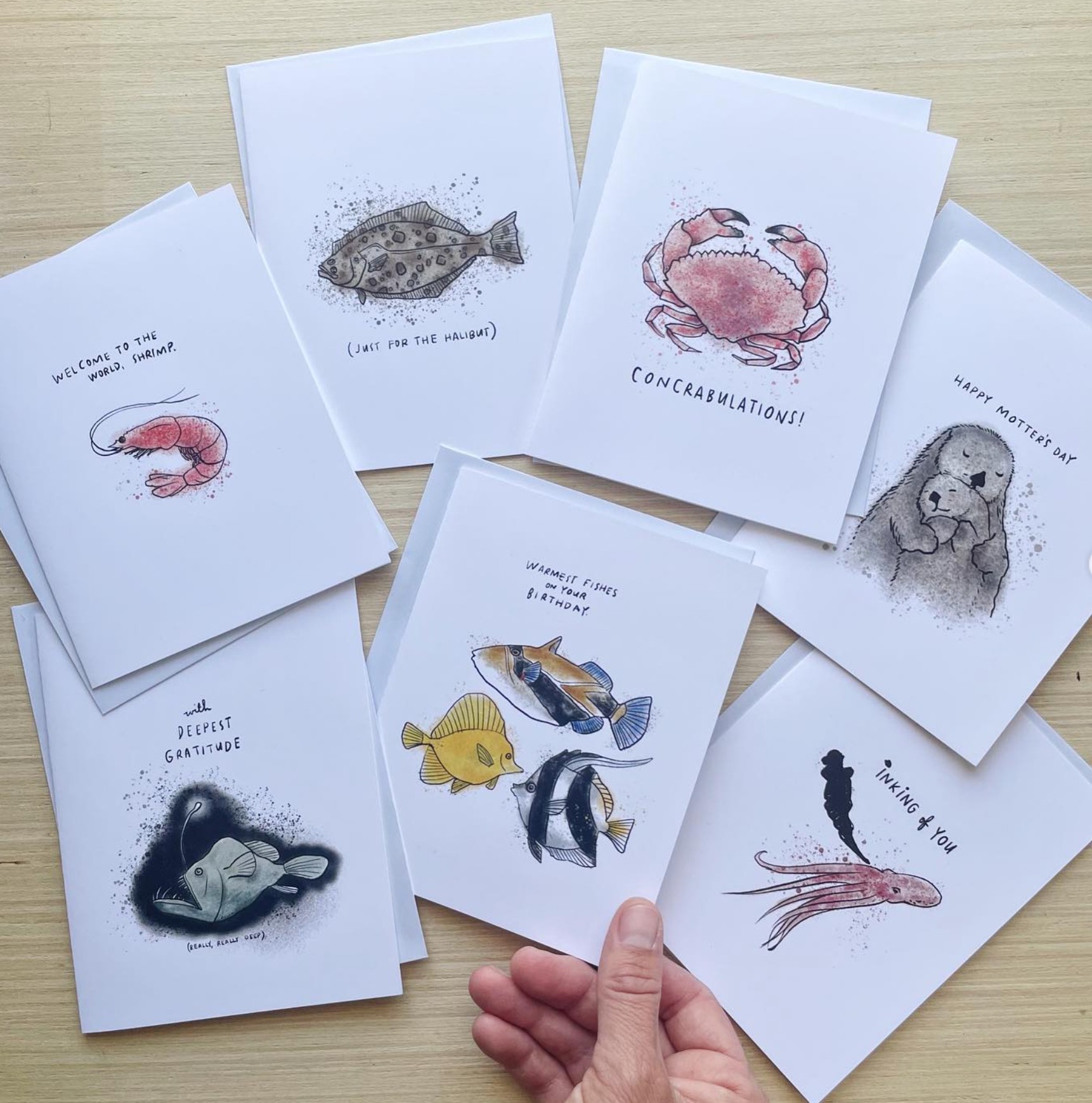
Have any books or other resources had a big impact on you?
I’m a big fan of seeking helpful resources and have sought out many in my time building my small business. I also try to be mindful of taking into account my values when seeking resources, and thus don’t go for the straight “how to make as much money as possible//gain the most followers as possible” strategies if they don’t feel sustainable and true to my ethos. A lot of feminist-forward/women-led resources interest me:
“My So-Called Freelance Life” by Michelle Goodman
“Nice Girls Don’t get the Corner office” by Lois Frankel, Ph. D
“Art, Inc” by Lisa Congdon
Some of my favorite podcasts:
“Before Breakfast” with Laura Vanderkam
“Proof to Product” with Katie Hunt
“We Can Do Hard Things” with Abby Wambach, Glennon Doyle, and Amanda Doyle
“How I Built This” with Guy Raz
I also have greatly benefitted from coaching this past year, and have been working with Stoked Coaching (@stokedcoaching) based out of the bay area. They have been incredibly helpful in helping me sort out my own values and approaches.


How can we best help foster a strong, supportive environment for artists and creatives?
Integrate art and visual resources where possible– and use local artists to help get your messages across. Keep holding events and festivals that showcase artists and creatives. Such a great way to connect with community.
Think local first– shop local as well!
Recognize art and artists as skilled and valuable business/career and provide resources to artists to help them with the business side of their efforts.
I think undergraduate and graduate art schools should provide education/resources for how to set up an art business/career. It’s wonderful to be trained in the classical skills, but often, artists graduate without a clear path to actually implement their skills to make a living. This would definitely elevate the ability of artists to thrive in society.
Contact Info:
- Website: www.hawkandhammer.com
- Instagram: @hawkandhammergram
- Linkedin: Tina Fuller Somers
Image Credits
Photos 1-3: Sunsprite Studio


